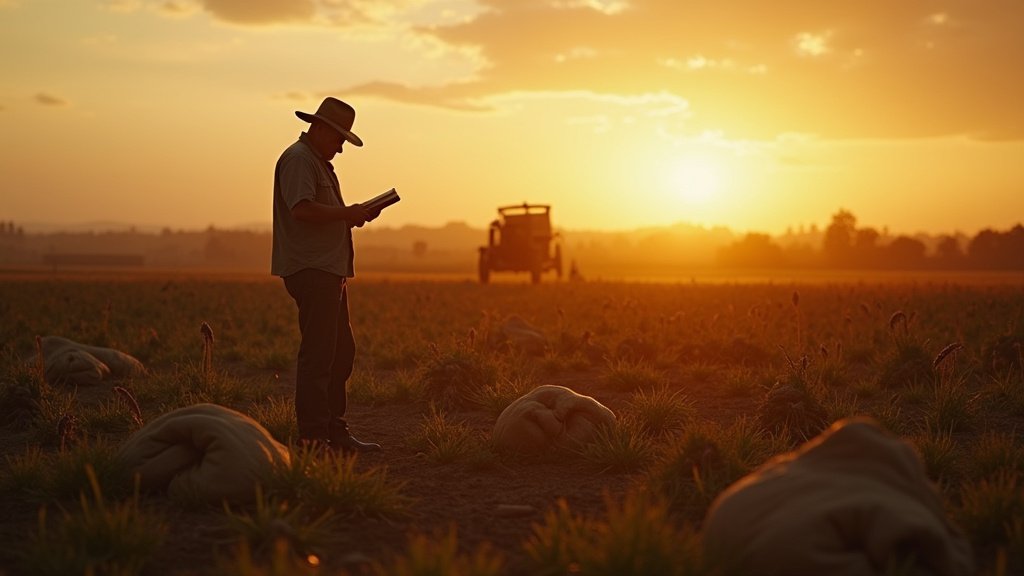Oregon’s landmark **farmworker overtime law**, enacted in 2022, is a pivotal piece of legislation aimed at ensuring fair compensation and improved working conditions for agricultural workers. This **farmworker overtime law** has sparked considerable debate, with some farmworkers reporting reduced earnings due to employers cutting hours, while Oregon farmers contend with increased farm labor costs, impacting agricultural competitiveness. Understanding the nuances of this **farmworker overtime law** is crucial for all stakeholders involved in Oregon labor law.
The Genesis of Overtime Protections: Understanding the Farmworker Overtime Law
Oregon’s House Bill 4002, signed into law in April 2022, represented a significant shift by mandating overtime pay for agricultural workers, a sector historically excluded from such protections under the federal Fair Labor Standards Act (FLSA) of 1938. This exclusion, rooted in racial discrimination against Black farm laborers at the time, has persisted for decades, disproportionately affecting Latino and Indigenous workers who constitute the majority of Oregon’s farm labor force today. Advocates, such as Pineros y Campesinos Unidos del Noroeste (PCUN), championed the **farmworker overtime law** as a matter of dignity, equity in agriculture, and basic fairness, ensuring farmworkers receive worker compensation akin to other industries. The law includes a phased implementation, starting with overtime pay after 55 hours per week in 2023-2024, decreasing to 48 hours in 2025-2026, and finally aligning with the 40-hour threshold by January 1, 2027. To cushion the financial impact on Oregon farmers, the state also introduced a tax credit program to help manage farm labor costs.
Farmworker Voices: Reduced Hours Under the Farmworker Overtime Law
Despite the **farmworker overtime law**’s intentions, some farmworkers report that the new regulations have inadvertently led to a decrease in their overall earnings. Maria de Lourdes Navarro, a farmworker, and her son David Montiel, shared that their weekly paychecks have shrunk significantly because employers are now limiting their hours to avoid overtime pay. Where they once worked up to 70 hours a week, they now often work around 48 hours, resulting in a substantial drop in take-home pay. This situation forces many workers to seek additional jobs or consider opportunities in other states, such as Washington, which may offer more consistent overtime hours. Reyna Lopez, executive director of PCUN, emphasizes that while the **farmworker overtime law** aims for fairness, the reality for many workers is reduced hours and financial strain, challenging the goal of ensuring farmworker rights and that workers don’t have to work excessive hours to make ends meet.
Farmer Concerns: Affordability and Competitiveness Under the Farmworker Overtime Law
Oregon farmers express significant concern over the escalating farm labor costs associated with the overtime mandate of the **farmworker overtime law**. Many small and medium-sized farms operate on thin margins, and the added expense of overtime pay, particularly for labor-intensive crops with critical harvesting windows, poses a serious threat to the rural economy. An analysis by Oregon State University economists Timothy Delbridge and Jeff Reimer found that the **farmworker overtime law** could negatively impact farm profitability and, surprisingly, decrease weekly earnings for some workers due to hour reductions. Farmers point out that agricultural products, unlike manufactured goods, cannot easily absorb price increases due to global market competition. Max Coleman, a hops grower, highlighted that labor constitutes a significant portion of his production costs, and mandated overtime, coupled with rising input prices for fertilizer and equipment, makes it difficult to remain profitable. The Oregon Farm Bureau and other agricultural organizations argue that these costs make Oregon less competitive, potentially driving production to states or countries with lower labor expenses, impacting overall farm profitability.
Economic Ripples: Profitability and Worker Incomes Under the Farmworker Overtime Law
The economic analyses of HB 4002, the **farmworker overtime law**, paint a complex picture. While the law aims to improve worker compensation, studies suggest that farmers’ pressure to minimize overtime costs leads them to reduce worker hours. This reduction can negate the benefit of higher overtime pay rates, resulting in lower overall weekly earnings for some farm laborers. For instance, an analysis indicated potential labor cost increases of 7% for dairies and 3.3% for cherry farms at the 48-hour threshold. Without the ability to pass these costs onto consumers due to market pressures, farm profitability is at risk. The tax credit program, intended to mitigate these costs, has been described as burdensome by some Oregon farmers, and participation numbers suggest it may not fully address the financial strain associated with this labor regulation.
Navigating the Divide: Advocacy and Future Outlook for the Farmworker Overtime Law
Advocacy groups on both sides continue to engage in discussions about the **farmworker overtime law**’s impact and potential adjustments. While farmworker advocates like PCUN stress the importance of equitable treatment and the historical context of the exclusion, farmer organizations, including the Oregon Farm Bureau and the Oregon Association of Nurseries, are pushing for reforms. Proposals include freezing the overtime threshold at 48 hours or allowing for higher thresholds during peak harvest seasons. The Oregon Board of Agriculture has also endorsed a collaborative approach to amending the **farmworker overtime law**. The debate highlights the intricate balance between ensuring fair labor practices and maintaining the economic viability of Oregon’s vital agricultural sector. The news from Oregon indicates an ongoing struggle to find a sustainable equilibrium for this labor law.
As Oregon’s agricultural industry navigates these new labor regulations, the focus remains on finding solutions that support both the livelihoods of farmworkers and the continued prosperity of the farms that are central to the state’s economy. The coming years will be critical in determining the long-term success and fairness of this pioneering **farmworker overtime law**.
Further reading: Related News on Google




